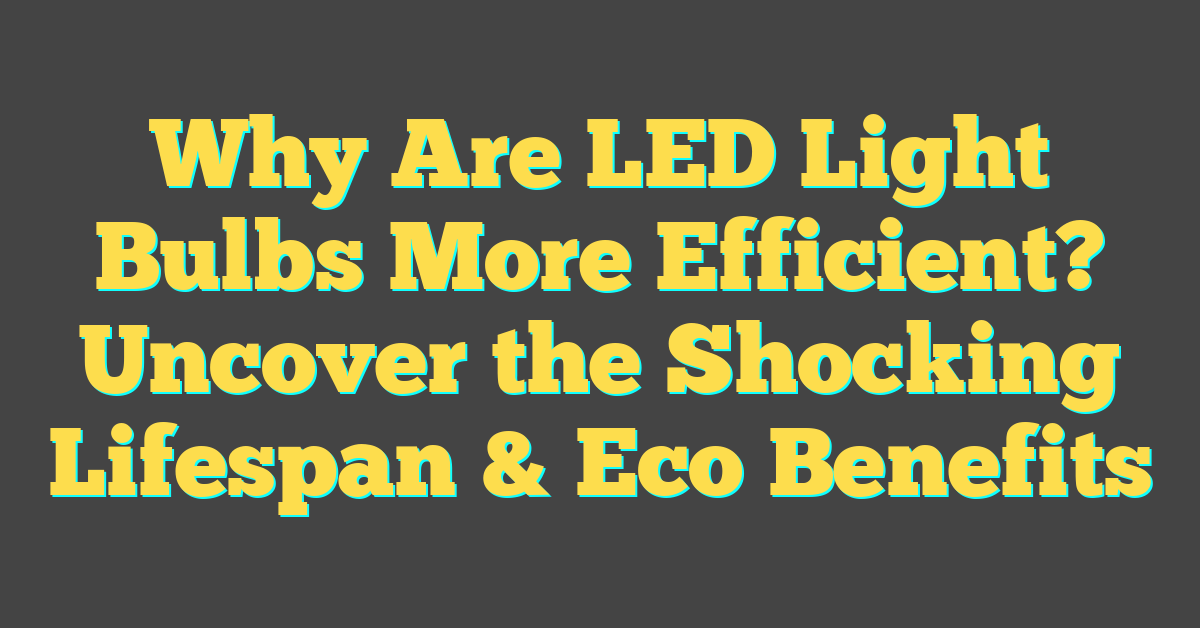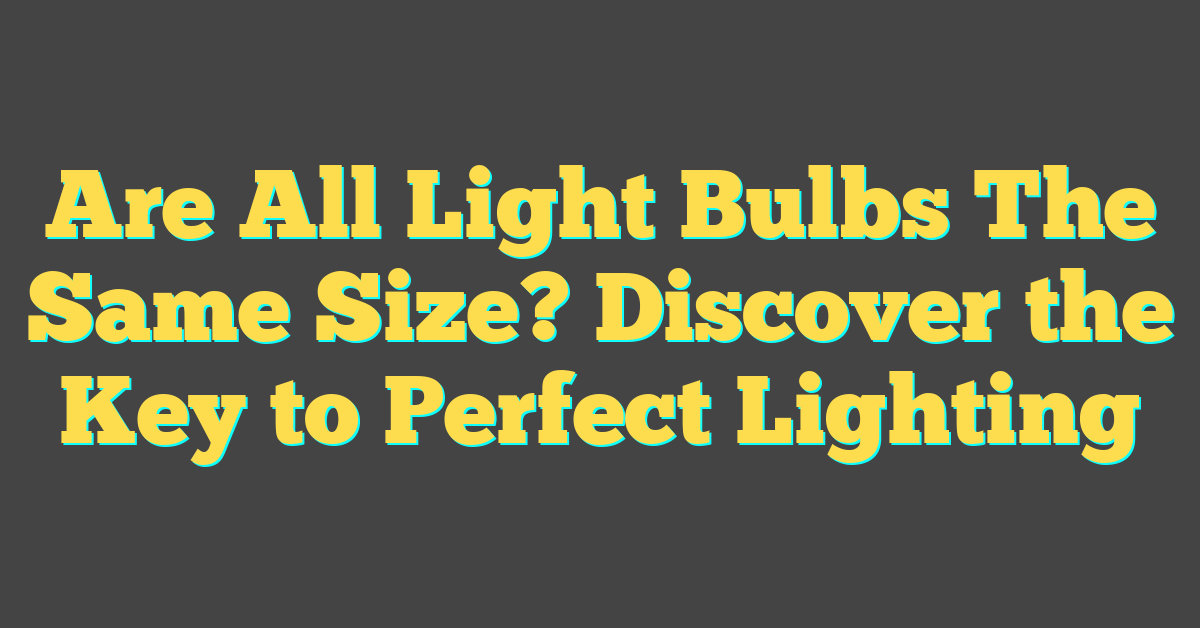Ever wondered if your indoor garden could thrive under the glow of LED light bulbs? You’re not alone. As you seek ways to boost your plants’ growth without relying on unpredictable weather, LED lights might just be the solution you’re looking for.

LED technology has revolutionized home lighting, but it’s also making waves in the world of indoor gardening. They’re energy-efficient, long-lasting, and, most importantly, plant-friendly. But are they the best option for your green friends? Let’s dive into the world of LED lighting for plants and see what all the buzz is about.
What are LED light bulbs?
Ever wondered what those energy-saving bulbs everyone’s raving about actually are? LED stands for light-emitting diode, a type of lighting that’s taken the market by storm, thanks to their superior efficiency and longevity. Unlike traditional incandescent bulbs that use filaments, LEDs generate light through the use of a semiconductor that emits light energy when an electrical current passes through it.
One of the main reasons you’ll want to consider LED light bulbs for your indoor gardening projects is their low heat production. Less heat means you can place LEDs closer to your plants without the worry of scorching them. This is a game-changer for compact spaces where managing temperature is crucial.
Why LEDs Make a Difference
- Energy Efficiency: LED light bulbs consume up to 80% less power than traditional bulbs. That means less energy used and lower utility bills for you.
- Longevity: On average, LED bulbs last up to 25 times longer than their incandescent counterparts. It’s the kind of long-term relationship your plants will love.
- Customizable Spectrum: LEDs can be engineered to produce a full spectrum of light, which mimics natural sunlight. What does this mean for your leafy friends? They get the exact wavelengths needed for photosynthesis, growth, and even flowering.
But it’s not just about utility savings or lasting longer. LEDs can profoundly influence plant growth. They provide your greens with a consistent light source, something that’s crucial for those delicate seedlings or the finicky herbs that demand steady light levels.
Tailoring Light for Plants
As you delve deeper into the world of indoor gardening, you’ll discover that different plants have varied light requirements. LEDs can be fine-tuned to suit these needs by adjusting light intensity and duration. Thanks to modern technology, you can now control these settings with smart systems or timers, nurturing your plants to their fullest potential without constant manual adjustments.
Remember, while lighting is key, your plants also need appropriate water, soil, and care to thrive. Pairing quality LED lights with your green thumb can transform your indoor garden into a verdant oasis. Keep tweaking and watching how your plants respond—after all, they’re the best indicators of your success.
How do LED light bulbs work for plants?
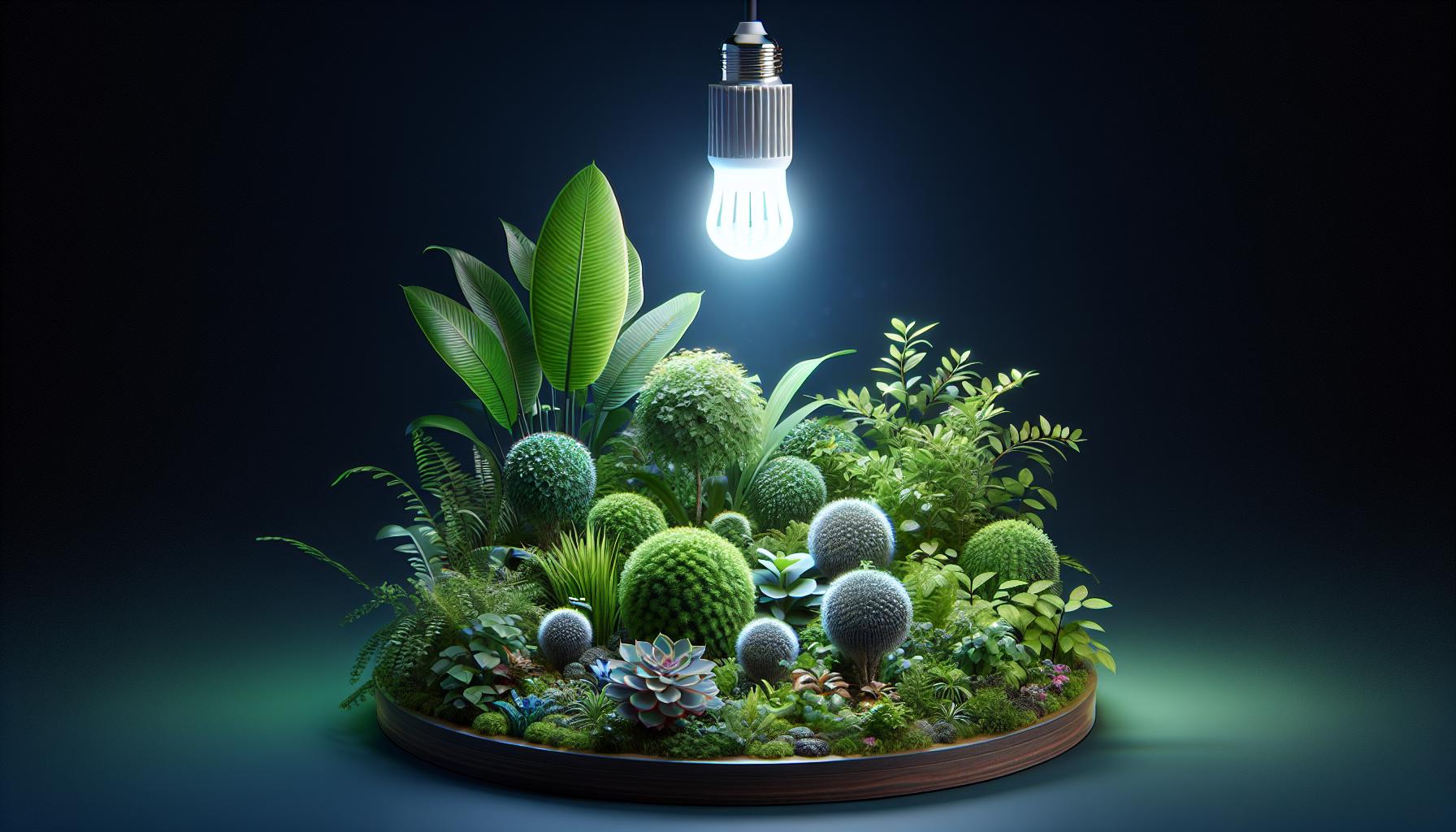
You’ve clearly seen LED light bulbs illuminating homes with their efficient glow, but how exactly do these technological wonders work their magic on plants? When it comes to indoor gardening, knowing the role of LED light bulbs can be a game-changer for your leafy companions.
LED bulbs emit light when an electrical current passes through a microchip, which illuminates tiny light sources known as diodes. Pretty genius, huh? The light produced is then directed within the spectrum that plants most efficiently use for photosynthesis. You already know photosynthesis is the process through which plants convert light into the energy they need to grow. In an indoor setting, where sunlight is a rare guest, LED light bulbs step in to provide that much-needed spectrum of light.
Part of their secret lies in the ability to produce a Full Spectrum of Light. This means they can mimic natural sunlight by providing your plants with a balanced blend of cool and warm light—that’s the blue and red wavelengths to you and me. Blue light promotes vegetative growth, while red light is crucial when your plant decides it’s time to flower and fruit.
Furthermore, the versatility of LEDs allows you to customize the light intensity and duration. Remember, not all plants crave the same amount of sunshine. With an LED setup, you can tailor the lighting conditions to match the needs of your various green friends—whether it’s a sun-loving tomato or a shade-seeking fern.
- Blue wavelengths encourage foliar growth
- Red wavelengths stimulate flowering and fruiting
- Adjustable intensity and duration cater to plant-specific needs
To add another feather to their cap, LEDs don’t waste much energy as heat. This means you can snug them close to your plants without the worry of overheating. Your tomatoes won’t get a sunburn from these lights!
With their long life span, you’re not just providing optimal growth conditions but also doing it sustainably. Your herb garden or your prized orchids will flourish under the attentive care of LEDs, and you’ll save on both your energy bill and replacement costs. It’s a win-win for you and your leafy friends.
Benefits of using LED light bulbs for plants
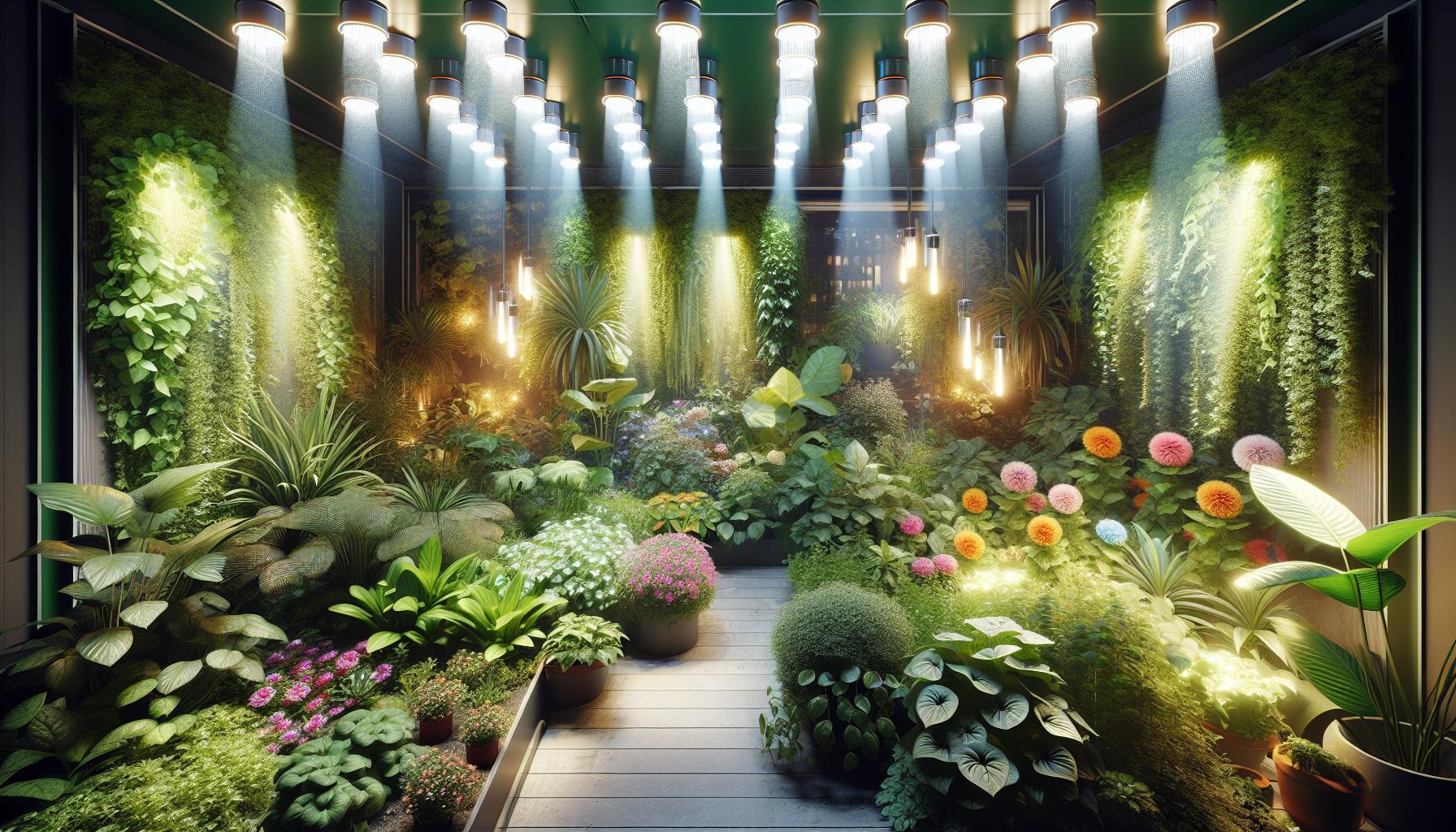
« Do Light Bulbs Make Noise? Uncover the Surprising Truth
What Can I Cover a Light Bulb With? 10 Ingenious DIY Shades »
When you delve into the realm of indoor gardening, lighting is not just a necessity; it’s a crucial ally in the success of your green endeavors. Lucky for you, LED light bulbs are here to offer a cornucopia of benefits for your photosynthesizing friends.
Precise Wavelengths for Optimal Growth: Plants are finicky eaters when it comes to light; they thrive on very specific wavelengths to conduct photosynthesis effectively. LEDs are tailor-made to fulfill this need, offering pinpointed blue and red lights. The blue light encourages robust leaf growth, and the red light, much like the warm embrace of the sun, aids in the flowering and fruiting processes.
- Energy Efficiency at Its Finest: With the growing concern for our planet, choosing lights that conserve energy is a no-brainer. LED bulbs consume significantly less electricity compared to traditional incandescent or even fluorescent bulbs. This trait not only curtails your energy bills but also reduces your carbon footprint, making indoor gardening an eco-friendly venture.
| Type of Bulb | Average Energy Usage (Watts) | Estimated Lifespan (Hours) |
|---|---|---|
| LED | 6-8 | 25,000-50,000 |
| Incandescent | 60 | 1,000-2,000 |
| Compact Fluorescent | 13-15 | 8,000-10,000 |
Durability That Lasts: One of the most gripping attributes of LED bulbs is their impressive durability. Unlike other types of lighting that may succumb to the rigors of frequent use, LEDs are hardy warriors, boasting a lifespan that far exceeds traditional alternatives. Less frequent replacements mean more savings and less hassle for you.
- Customizable Intensity and Color: Adjusting the light environment to suit various plant stages is essential. With LEDs, you can seamlessly regulate the intensity and even the color of the light to align with your plants’ growth cycle, all without swapping out bulbs. Whether you’re nurturing delicate seedlings or encouraging your tomatoes to fruit, there’s an LED setting for that.
Considerations when using LED light bulbs for plants
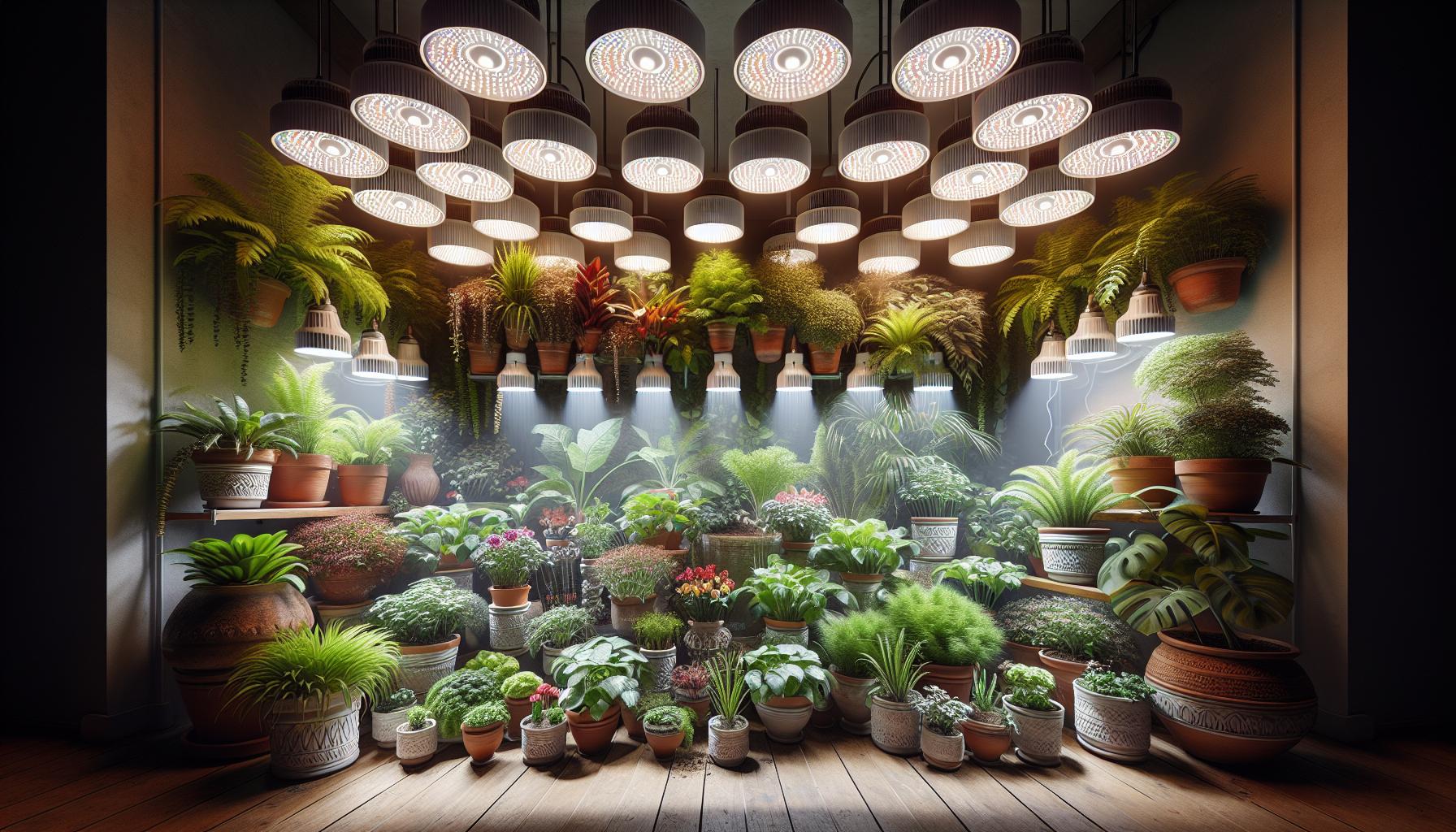
When you’re delving into the world of indoor gardening, it’s crucial to understand that not all LED light bulbs are created equal. Your plants need the right spectrum of light to thrive, so when picking out LEDs, you’ve got to be choosy.
Choose the Correct Spectrum
LEDs come in various spectrums, and selecting the right one for your foliage is akin to picking out the perfect fertilizer—it’s vital. Look for full-spectrum LEDs as they mimic natural sunlight, providing your plants with a well-rounded light diet. Remember, your leafy friends are choosy eaters when it comes to light.
Intensity Matters
Just as important as the color of the light is its intensity. Young seedlings require gentle light, whereas more mature plants crave intensity. LEDs offer adjustability that traditional bulbs can’t match. That means you can tweak the light intensity to suit the growth stage of your plants, ensuring they get just what they need without overdoing it.
Avoid Overheating
While LEDs are known for their cool operation, too many bulbs too close to your plants can still lead to overheating. Keep a balanced environment—think of it as room temperature for your plants. Ensure there’s enough space between the light source and the foliage to prevent heat stress.
- Space out your LEDs
- Monitor temperature regularly
- Adjust as needed
Check the Quality of the Bulb
Not all LEDs are worth your green. Poor quality bulbs may not deliver the consistent light your plants need, and they can peter out faster than you’d expect. Do your homework and invest in quality products from reputable manufacturers. Your plants—and your pocketbook—will thank you in the long run.
By paying attention to these considerations, you’re setting up your indoor garden for success. With the right LED light bulbs illuminating your plants, you’re not just bringing light into their world—you’re nurturing life. Embrace the glow of LEDs and watch your indoor garden flourish.
Tips for using LED light bulbs effectively in indoor gardening

Whether you’re a green thumb or a newbie, leveraging the advanced capabilities of LED light bulbs can elevate your indoor gardening game. As an enthusiastic DIYer with a knack for lighting up spaces (literally), I’ve learned that these bulbs aren’t just a breakthrough in efficiency; they’re a boon for plants.
Choose the Correct Spectrum for Your Plants
Every plant has its preferences. If you’re growing leafy greens, LEDs that emit a higher ratio of blue light might be your best bet. Meanwhile, flowering plants often flourish under red light. It’s not just about providing light; it’s about providing the right light.
- Full-spectrum LEDs mimic natural sunlight and typically cover all the bases.
- Tailored-spectrum LEDs can cater specifically to the growth stage of your plants, which ensures they’re getting precisely what they need.
Adjust the Intensity Wisely
Just like how you wouldn’t want to stare at a blinding light, your plants can also get too much of a good thing. Thankfully, many LEDs come with adjustable intensity levels. If your plants are young and tender, dial down the brightness. As they mature, you can gradually crank it up.
Space the Bulbs Accurately
Proper spacing is crucial not just for even light distribution but also to prevent any hot spots that could scorch your foliage.
- Vertical gardens: Position LEDs closer due to the plants’ limited spread.
- Wide beds: The bulbs should be further apart to widen the footprint of light.
Quality Matters
Just like any other aspect of DIY projects, cutting corners with your lightbulbs isn’t the way to go. Inexpensive LEDs may save you a few bucks upfront, but they could lack the efficiency and longevity you need:
| Quality Aspect | High-End LED | Low-Cost LED |
|---|---|---|
| Lifespan | Long | Short |
| Efficiency | High | Compromised |
| Spectrum | Consistent | Inconsistent |
Invest in reputable brands that have invested in testing and quality control. It’ll pay off in the health and vitality of your indoor garden, ensuring that your leafy companions enjoy the best possible conditions.
Conclusion
So you’ve got the lowdown on making LED light bulbs work for your indoor garden. Remember, getting the spectrum right, tweaking the intensity, spacing those bulbs properly, and opting for quality will set you up for success. Stick to these guidelines and watch your plants flourish under the glow of LEDs. Now, it’s time to put that green thumb to work and turn your space into a verdant oasis. Happy gardening!
Frequently Asked Questions
What spectrum of LED light is best for indoor gardening?
Different plants may require different light spectrums, but generally, full-spectrum LED lights are ideal as they mimic natural sunlight, benefiting most indoor plants.
How do I adjust the intensity of LED lights for my plants’ growth stages?
For seedlings, use lower intensity light to prevent stress. Increase intensity as plants grow, with the highest intensity for flowering and fruiting stages. Consider dimmable LED options for easy adjustments.
What’s the correct spacing for LED light bulbs in an indoor garden?
Space bulbs evenly to prevent hotspots and ensure each part of your garden receives equal light. The exact spacing can vary, depending on the bulb’s strength and the type of plants.
Why should I invest in high-quality LED bulbs for my indoor garden?
High-quality LED bulbs are more energy-efficient, have a longer lifespan, and often offer a better quality of light spectrum, which can result in healthier plants and better yields.



